Homesteading on a Budget: How to Save Money and Live Your Dream!
Homesteading is a way of life that involves living off the land, growing your own food, and becoming self-sufficient. However, starting a homestead can seem daunting, especially if you’re on a tight budget. The good news is that you can start homesteading on a budget by taking a few simple steps.
One of the first things you can do to start homesteading on a budget is to declutter your home and get rid of things you no longer need. This will not only free up space but also give you a better idea of what you have and what you need. You can then focus on the essentials, such as growing your own food, raising chickens, and making your own household items. By doing so, you’ll reduce your expenses and become more self-sufficient.
Disclosure: As an Amazon affiliate, I earn from qualifying purchases at no extra cost to you. My blog contains other affiliate links as well for your convenience. To learn more, you may read my Disclosure Policy. Thank you for supporting my blog!
Starting Small
When starting a homestead on a budget, it’s essential to start small. This approach will allow you to learn and acquire the necessary knowledge and skills gradually. Here are a few sub-sections that will help you get started:
Plan
Before starting, it’s essential to have a plan. You need to identify what you want to achieve and set realistic goals. This plan should include a budget, a timeline, and a list of necessary equipment and supplies. By having a plan, you can avoid overspending and ensure that you are making progress towards your goals.
Goals
Setting goals is crucial when starting small. Your goals should be specific, measurable, achievable, relevant, and time-bound. For example, suppose you want to start a garden. In that case, your goal could be to plant five different vegetable varieties within the next three months. By setting specific goals, you can track your progress and see how far you’ve come.
When starting small, it’s important to remember that homesteading is a journey, not a destination. You will encounter challenges and setbacks along the way, but don’t get discouraged. Use these experiences as opportunities to learn and grow.
Here are a few tips to help you get started:
- Start with a small garden and gradually expand as you gain more knowledge and experience.
- Learn to preserve food by canning, freezing, or dehydrating to reduce waste and save money.
- Focus on skills that require little to no money, such as foraging, cooking from scratch, and sewing.
- Invest in quality tools and equipment that will last for years and save you money in the long run.
By starting small and focusing on your goals, you can build a successful homestead on a budget. Remember to stay patient, persistent, and open-minded, and you’ll be well on your way to achieving your dreams.
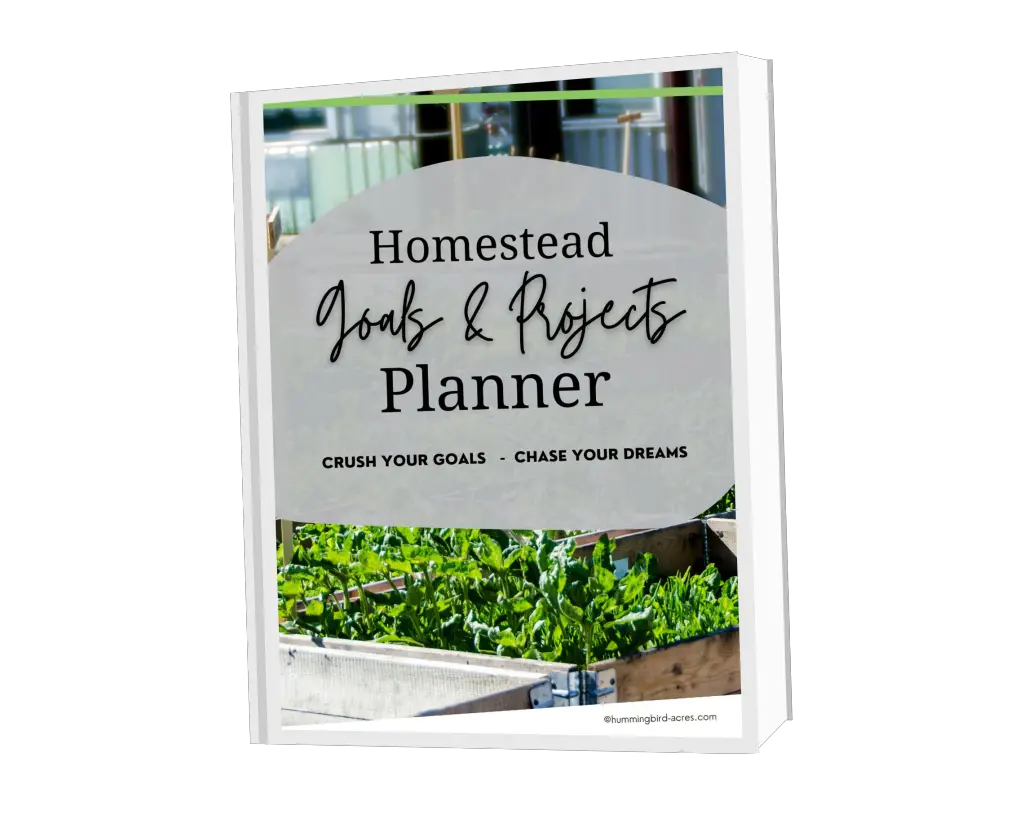
Grab Our Planner
Homestead Goal & Project Planner
Set Goals and Achieve them with our proven system.
Maximizing Resources
When homesteading on a budget, it’s important to make the most of the resources available to you. Here are some sub-sections that can help you maximize your resources:
Used
Buying used items can be a great way to save money. Check out garage sales, thrift stores, and online marketplaces like Craigslist and Facebook Marketplace for deals on tools, equipment, and even livestock. You can often find items in good condition for a fraction of the cost of new ones.
Barter
Bartering is another way to save money on homesteading supplies. You can trade goods or services with other homesteaders in your area. For example, you could trade some of your excess produce for some hay or a few chickens. Bartering can also help you build relationships with other homesteaders in your community.

Craigslist
Craigslist is a great resource for finding used items for your homestead. You can often find deals on everything from tools to livestock. Be sure to use caution when meeting with sellers and always inspect items before buying them.
Facebook Marketplace
Facebook Marketplace is another online marketplace where you can find used items for your homestead. You can search for items by location and category, making it easy to find what you need. Be sure to read seller reviews and inspect items before buying them.
Library
Your local library can be a great resource for homesteading information. You can borrow books on gardening, animal husbandry, and other homesteading topics for free. You can also attend workshops and events at your library to learn new skills and connect with other homesteaders in your area.
By being resourceful and taking advantage of these resources, you can homestead on a budget without sacrificing quality or sustainability.

Grab my free Guide
How to Start a Homestead
6 Inexpensive Ways to Start Homesteading without Land.
Enter your name & email so we can send your our FREE Guide.
Saving Money on Land
If you’re looking to homestead on a budget, finding affordable land is crucial. Here are some tips to help you save money on your land purchase.
Local
One of the best ways to save money on land is to look for properties that are local to you. This can help you save money on travel costs and make it easier to visit the property and do any necessary work.
To find local properties, try looking online at real estate websites or contacting local real estate agents. You can also check with local land trusts or conservation organizations to see if they have any properties for sale.
When looking for local properties, be sure to consider factors such as zoning regulations, soil quality, and access to water and other resources. You may also want to consider the proximity to other homesteaders or farmers who can offer advice and support.
Overall, finding local land can be a great way to save money and build a strong community of like-minded individuals.
Frugal Homesteading
Homesteading can be a rewarding and fulfilling lifestyle, but it can also be expensive. However, with some careful planning and frugal practices, you can live a self-sufficient lifestyle without breaking the bank. Here are some tips for frugal homesteading.
Expenses
One of the first steps to homesteading on a budget is to track your expenses. This will help you identify areas where you can cut back and save money. Make a list of all your monthly expenses, including bills, groceries, and other essentials. Look for ways to reduce these expenses, such as shopping for deals, buying in bulk, or growing your own food.
Tight Budget
Living on a tight budget can be challenging, but it’s not impossible. Look for ways to save money on everything you do, from buying clothes to heating your home. Shop at thrift stores, use coupons, and take advantage of free resources whenever possible. You can also look for ways to earn extra income, such as selling your homemade goods or offering your skills and services to others.
Simplify
Simplifying your life is another key to frugal homesteading. Focus on the essentials and eliminate unnecessary expenses and clutter. This can include downsizing your home, reducing your wardrobe, and cutting back on entertainment expenses. By simplifying your life, you can reduce stress and free up time and resources for the things that matter most.
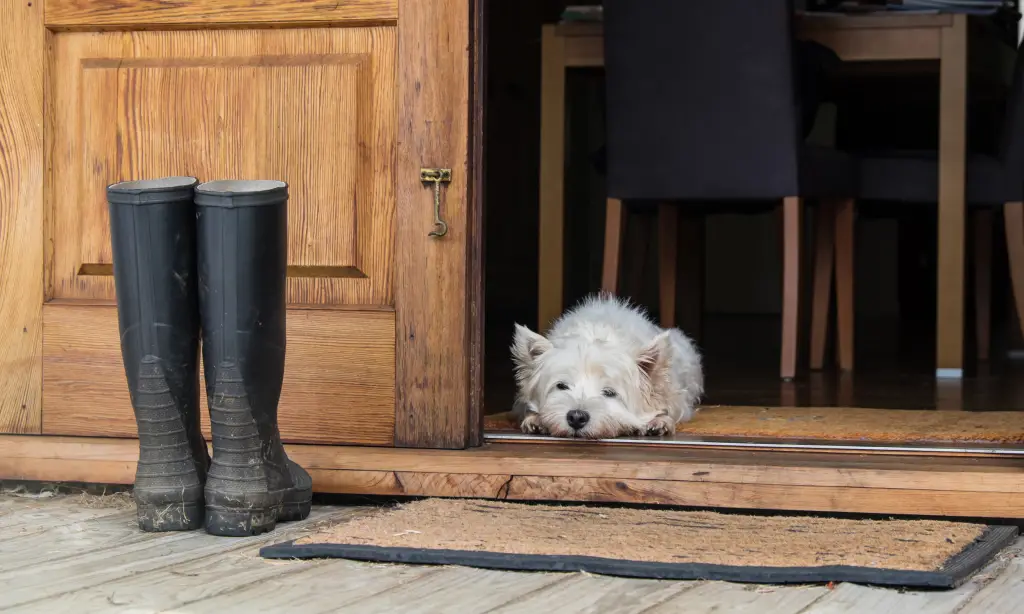
Declutter
Decluttering your home is another important step in frugal homesteading. By getting rid of things you no longer need or use, you can create more space and reduce the need for storage. You can also sell or donate items you no longer need, which can help you earn extra money or give back to your community.
In summary, frugal homesteading is all about living a self-sufficient lifestyle while being mindful of your expenses. By tracking your expenses, living on a tight budget, simplifying your life, and decluttering your home, you can achieve your homesteading goals without breaking the bank.
Growing Your Own Food
If you’re homesteading on a budget, growing your own food is an excellent way to save money while also providing fresh, nutritious food for your family. Here are some sub-sections to help you get started:
Gardening
Gardening is one of the most popular ways to grow your own food. You can start small with a few pots or containers on your patio or balcony, or you can create a larger garden in your yard. To save money, consider starting your plants from seeds instead of buying seedlings or transplants. You can also save seeds from your own plants to use in future seasons.

Get our
Garden Planner & Journal
Everything you need to start and maintain a successful garden. Take the guess work out of what to plant where and when to start your seeds.
Composting
Composting is a great way to create nutrient-rich soil for your garden without spending money on fertilizers. You can compost food scraps, yard waste, and even paper products. Composting also helps reduce the amount of waste you send to the landfill.
Raised Bed
Raised bed gardening is a popular method for growing vegetables and herbs. By building a raised bed, you can control the soil quality and drainage, and you can also reduce the amount of weeding you need to do. You can build a raised bed using inexpensive materials like cinder blocks or untreated lumber.
Foraging
Foraging is a way to find free food in nature. You can forage for wild berries, mushrooms, and other edible plants in your local area. However, it’s important to do your research and make sure you’re only consuming plants that are safe to eat.
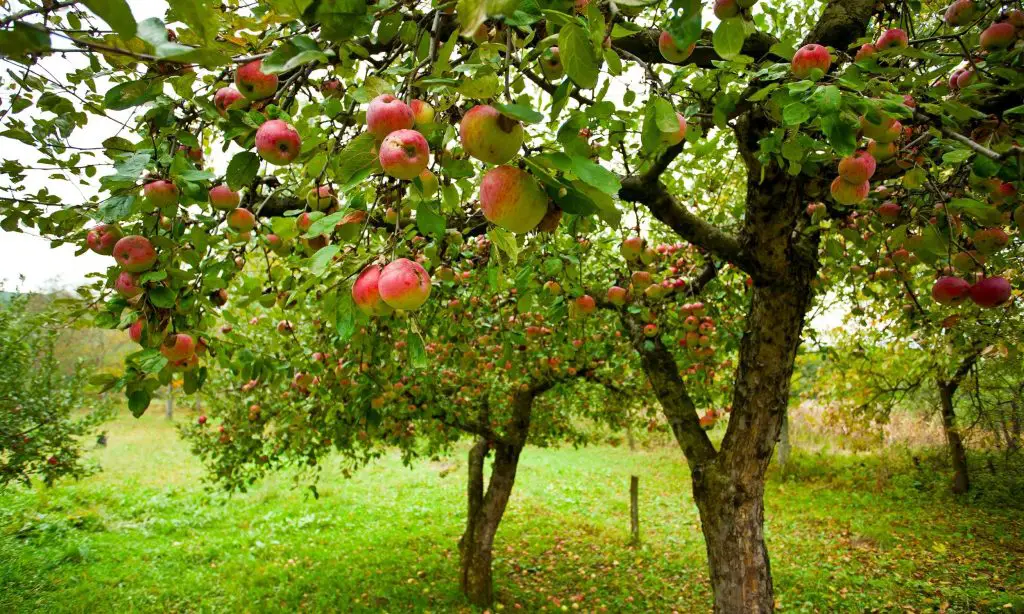
Fruit Trees
Fruit trees are a great investment for homesteaders on a budget. While they can be expensive to purchase initially, they will provide you with fresh fruit for years to come. You can also consider planting dwarf or semi-dwarf fruit trees to save space and money.
Herbs
Growing your own herbs is an easy way to add flavor to your meals without spending a lot of money. You can grow herbs in pots or in your garden. Herbs like basil, parsley, and thyme are easy to grow and can be used in a variety of dishes.
Vertical Garden
If you have limited space, consider creating a vertical garden. You can use a trellis or other structure to grow plants vertically, which saves space and can also be visually appealing. You can grow vegetables, herbs, and even flowers in a vertical garden.
By growing your own food, you can save money while also providing fresh, nutritious food for your family. Whether you’re gardening, composting, or foraging, there are many ways to grow your own food on a budget.
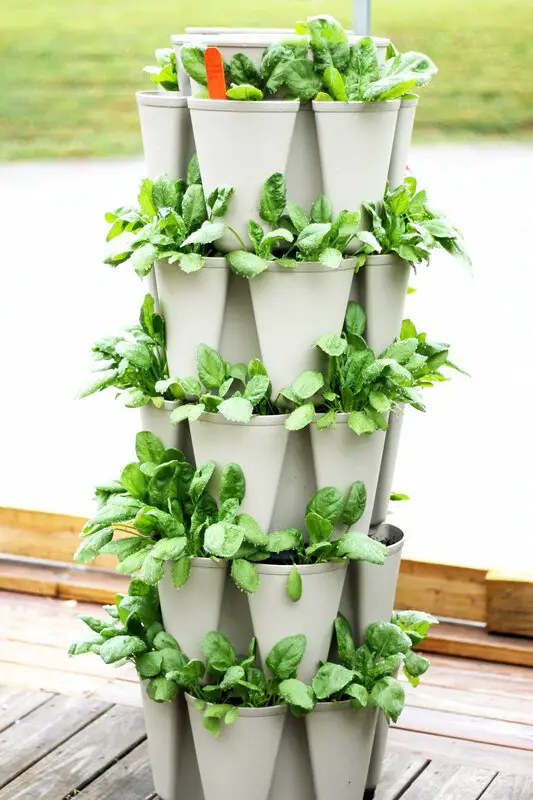
Raising Livestock
Raising livestock can be a great way to provide food for your family and even earn some extra income. Here are some options for raising livestock on a budget:
Chickens
Chickens are a popular choice for homesteaders because they are relatively easy to care for and provide both eggs and meat. You can start with just a few hens and a rooster, and gradually expand your flock as you gain experience. Chickens also provide fertilizer for your garden and can help control pests.
Goats
Goats are another great option for homesteaders. They are hardy animals that can thrive in a variety of conditions, and they provide milk, meat, and fiber. Goats are also excellent at clearing brush and weeds, making them a useful addition to your land. You can start with just one or two goats and gradually expand your herd as you gain experience.
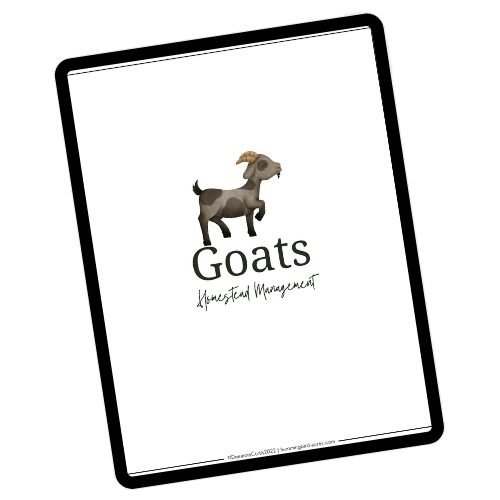
Grab Our
Raising Goats Management Binder
Everything you need to keep track of your herd.
Meat Rabbits
Rabbits are a good choice for homesteaders who want to raise meat but don’t have a lot of space. They are quiet and easy to care for, and they reproduce quickly. You can start with just a few rabbits and gradually expand your herd as you gain experience. Rabbits also provide fertilizer for your garden.
Pigs
Pigs are a bit more challenging to care for than chickens, goats, or rabbits, but they can provide a lot of meat for your family. You can start with just one or two pigs and gradually expand your herd as you gain experience. Pigs also provide fertilizer for your garden.

Quail
Quail are a good choice for homesteaders who want to raise meat but don’t have a lot of space. They are small and easy to care for, and they reproduce quickly. Quail also provide eggs and can be raised for their feathers.
Rabbits
In addition to meat rabbits, you can also raise rabbits for their fur. Angora rabbits, for example, produce a soft, luxurious wool that can be spun into yarn. Rabbits are quiet and easy to care for, and they provide fertilizer for your garden.
When raising livestock, it’s important to provide them with adequate food, water, and shelter. You’ll also need to be prepared to deal with any health issues that may arise. With some research and preparation, however, raising livestock can be a rewarding and cost-effective way to provide food for your family.
Preserving Food
Preserving food is a crucial part of homesteading on a budget. It allows you to store food for longer periods, avoid food waste, and save money in the long run. Here are some methods you can use to preserve your food.
Canning
Canning is a popular method of food preservation that involves sealing food in jars and then heating them to kill bacteria. This method is great for preserving fruits, vegetables, and meats. Canning requires some equipment, including a canner, jars, lids, and a jar lifter. However, you can find affordable canning kits that include all the necessary tools.
Dehydrating
Dehydrating is another method of food preservation that involves removing moisture from food. This method is great for preserving fruits, vegetables, and meats. You can use a dehydrator or an oven to dehydrate food. Dehydrated food takes up less space than canned food, and it can last for a long time. You can also use dehydrated food in recipes or as a snack.
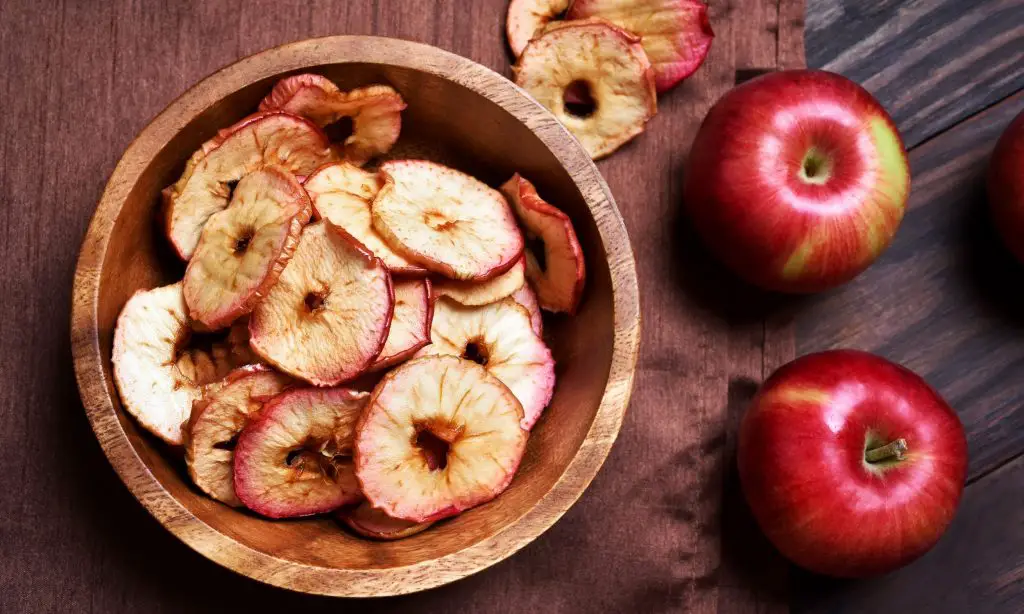
Jars
Jars are a versatile tool for food preservation. You can use jars for canning, dehydrating, and storing dry goods. Jars come in different sizes and shapes, and they are affordable. You can reuse jars from store-bought food or buy them in bulk. Jars are also great for storing homemade jams, sauces, and pickles.
Preserve Food
Preserving food is a skill that takes practice. Start small and focus on preserving foods you enjoy. You can preserve food by canning, dehydrating, freezing, or fermenting. Experiment with different methods and recipes to find what works best for you. Keep track of your inventory and storage space to avoid food waste.
Preserving food is an essential part of homesteading on a budget. It allows you to store food for longer periods, avoid food waste, and save money in the long run. With these methods, you can preserve your food and enjoy it throughout the year.
Making Money
If you’re homesteading on a budget, you’re likely looking for ways to supplement your income. Luckily, there are several ways to make money while homesteading. Here are some ideas to get you started:
Income
1. Sell Your Produce
If you have a garden, you can sell your produce at a local farmer’s market or to your neighbors. This is a great way to make some extra cash while also getting rid of excess produce.
2. Raise Livestock
Raising livestock can be a great way to make money. You can sell meat, eggs, and milk to your local community. Be sure to research the laws in your area before starting a livestock operation.
3. Sell Crafts
If you’re handy with a sewing machine or a paintbrush, you can sell your crafts online or at craft fairs. This can be a fun and creative way to make money while homesteading.
4. Offer Homesteading Services
If you have skills that other homesteaders need, you can offer your services for a fee. For example, if you’re good at canning or preserving food, you can offer to teach others how to do it.
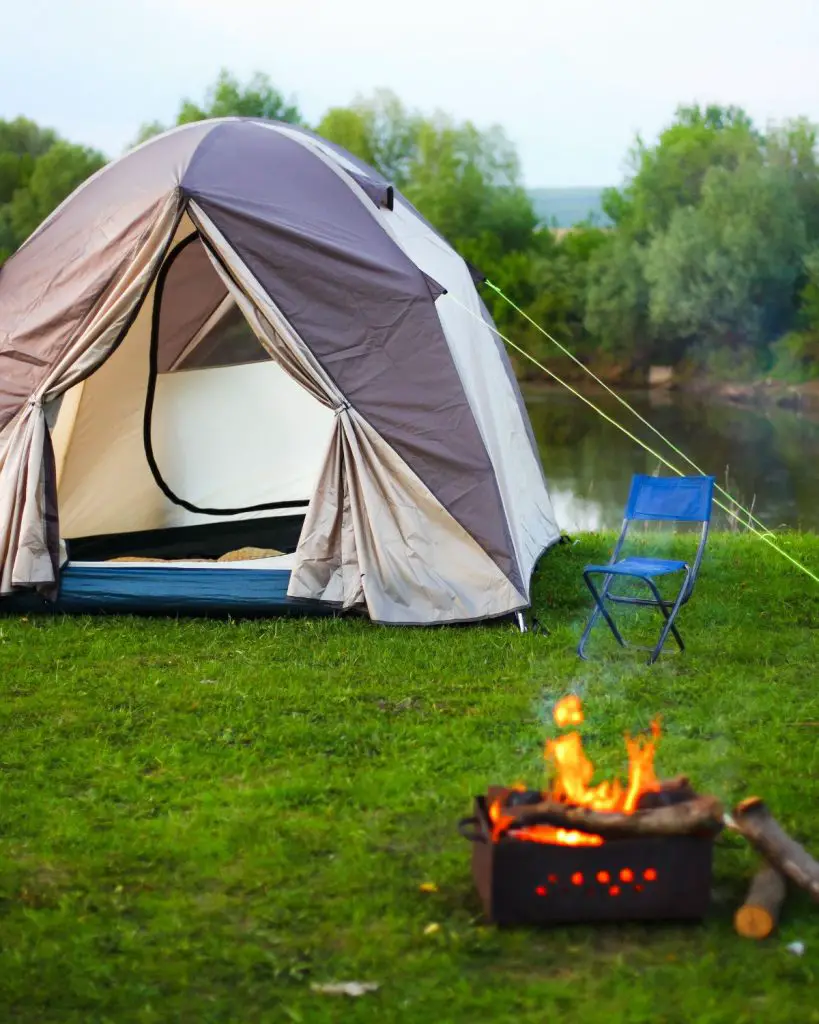
5. Rent Out Your Property
If you have extra space on your property, you can rent it out to campers or RVers. This can be a great way to make money while also meeting new people.
6. Start a Blog
If you’re passionate about homesteading, you can start a blog and make money through advertising and affiliate marketing. This can be a great way to share your knowledge and experience while also making some extra cash.
By combining these income streams, you can make a decent amount of money while homesteading on a budget. Just be sure to do your research and stay within the laws and regulations in your area.
DIY Homesteading
If you’re homesteading on a budget, DIY projects can be a great way to save money. Here are some ideas for DIY projects that can help you save money while homesteading.
Fencing
Fencing can be expensive, but it’s important for keeping your animals safe and contained. One way to save money on fencing is to build your own. You can use materials like wood, wire, and even pallets to build a sturdy fence. Just be sure to research the best materials and techniques for your specific needs.
Greenhouse
A greenhouse is a great way to extend your growing season and grow plants that might not otherwise survive in your climate. Building your own greenhouse can be a cost-effective option. You can use materials like PVC pipes, plastic sheeting, and even old windows to build a greenhouse that fits your needs and budget.
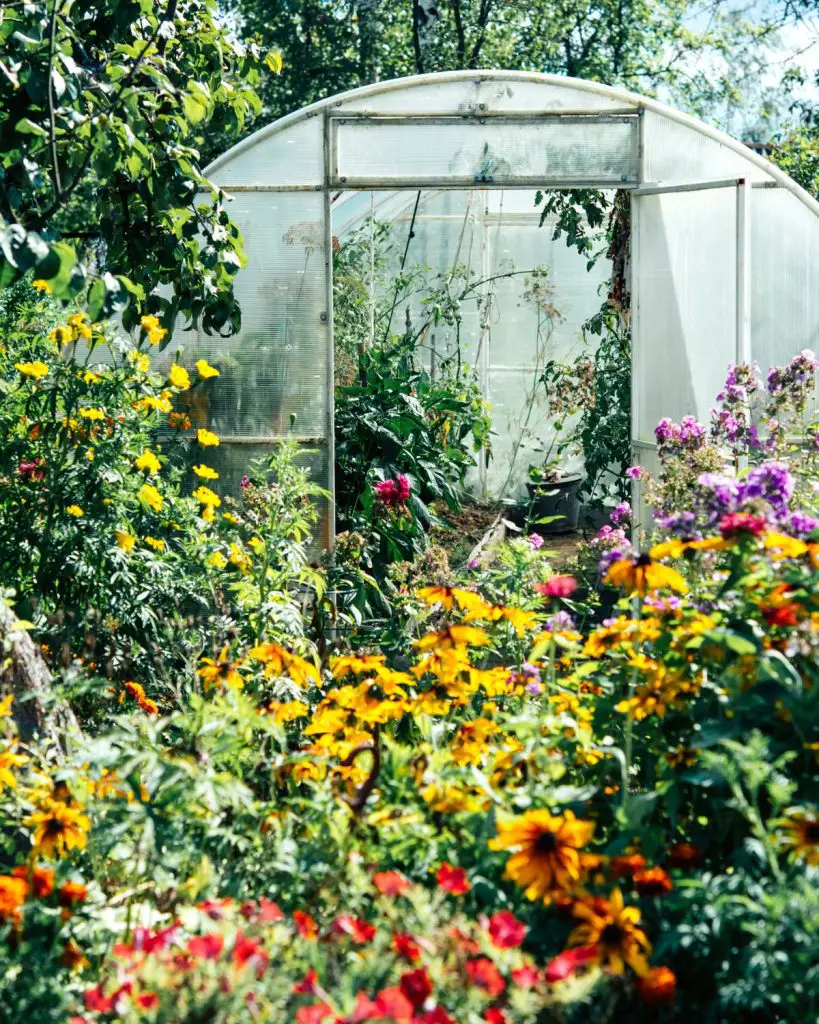
Oven
If you love to bake, building your own oven can be a fun and cost-effective project. You can use materials like clay, bricks, and even recycled materials like old propane tanks to build an oven that works for your needs. Just be sure to research the best techniques for building and using your oven safely.
Pallets
Pallets can be a versatile material for DIY projects on a homestead. You can use them to build everything from raised garden beds to chicken coops. Just be sure to research the best techniques for working with pallets and make sure they are safe and free of chemicals before using them in your projects.
Shelter
If you have animals on your homestead, providing shelter is important for their health and well-being. Building your own animal shelter can be a cost-effective option. You can use materials like wood, metal, and even recycled materials to build a shelter that fits your needs and budget. Just be sure to research the best materials and techniques for your specific needs.
Remember, DIY projects can be a great way to save money while homesteading, but they can also be time-consuming and require some skill and knowledge. Be sure to research the best materials and techniques for your specific needs and take the time to do your projects safely and correctly.
Becoming Self-Sufficient
If you’re homesteading on a budget, becoming self-sufficient is a must. Here are some ways you can achieve that goal:
Self-Sufficiency
To become self-sufficient, you need to prioritize what’s important and be resourceful. Start by growing your own food. You can start small with a container garden or a few raised beds. This will help you save money on your grocery bill and ensure that you’re eating fresh, healthy produce.
Next, consider raising your own livestock. Chickens are a great place to start. They’re relatively easy to care for and provide fresh eggs. You can also consider raising rabbits, goats, or pigs.
Finally, learn to preserve your own food. Canning, dehydrating, and freezing are all great ways to make your food last longer.
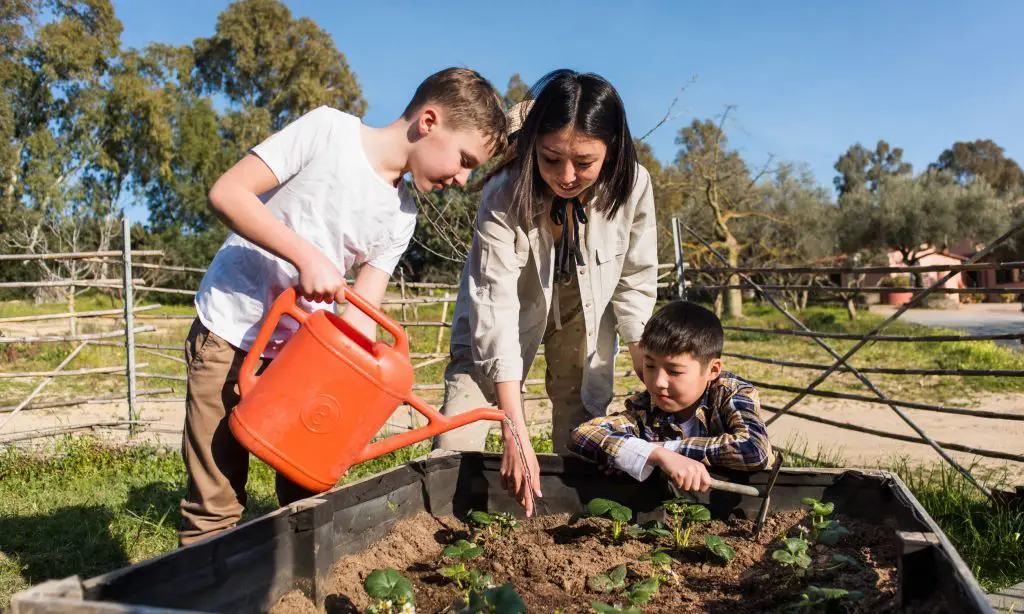
Well
If you’re homesteading in a rural area, you may need to rely on a well for your water supply. To save money on your water bill, consider installing a hand pump. This will allow you to pump water directly from the well without using electricity.
You should also consider investing in a water filtration system. This will ensure that your water is safe to drink and reduce the need for bottled water.
Livestock Feed
Feeding your livestock can be expensive, but there are ways to cut costs. Consider growing your own feed. You can plant a field of corn, wheat, or oats to feed your animals.
You can also consider purchasing feed in bulk. Many feed stores offer discounts for large orders.
Water Bill
If you’re connected to a municipal water supply, your water bill can be a significant expense. To save money, consider installing low-flow fixtures in your home. You can also collect rainwater to use for watering your garden or flushing your toilet.
Finally, consider investing in a greywater system. This will allow you to reuse water from your shower, sink, or washing machine for other purposes.
By becoming self-sufficient, you can save money and live a more sustainable lifestyle. With a little effort and resourcefulness, you can achieve your homesteading goals on a budget.
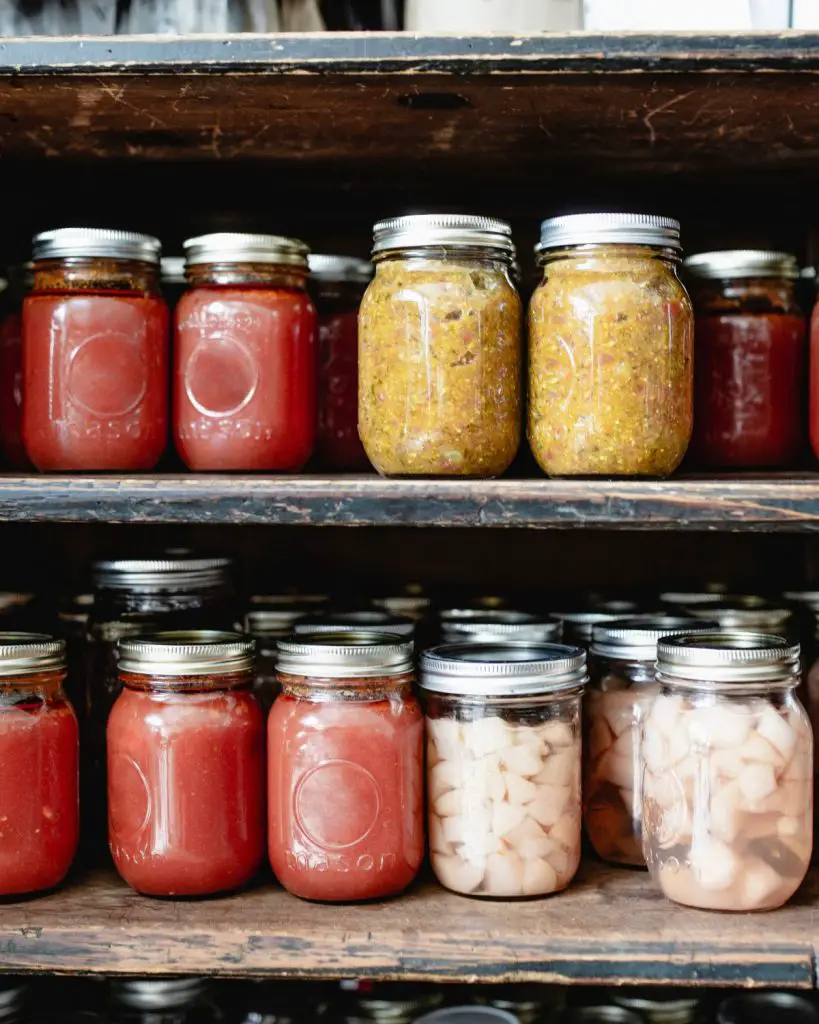
In conclusion, homesteading on a budget is not only possible but also enjoyable. By following the tips and tricks provided in this article, you can create your dream homestead without breaking the bank. Remember that every homestead is unique, and what works for one may not work for another. Therefore, it is essential to experiment and find the best solutions for your situation.
One of the most crucial aspects of homesteading on a budget is careful planning and research. By setting up a realistic budget and prioritizing projects based on importance, you can avoid overspending and wasting resources. Additionally, shopping around for deals and using secondhand materials can save you a lot of money without sacrificing quality.
Growing your own food is another great way to save money on groceries and become more self-sufficient. Start small and focus on necessities such as vegetables and fruits that are easy to grow and maintain. You can also consider bartering and trading with other homesteaders to diversify your crops and increase your yield.
Embracing DIY projects is another excellent way to save money and learn new skills. From building your own chicken coop to making your own soap, there are endless opportunities to be creative and resourceful. Finally, reducing energy costs by using renewable energy sources such as solar panels can help you save money and reduce your carbon footprint.
In summary, homesteading on a budget requires dedication, persistence, and resilience. However, with careful planning and resource management, you can build a healthy and sustainable homestead that provides for you and your family. Start small, focus on necessities, and don’t be afraid to experiment and try new things. Happy homesteading!
You may also enjoy these related articles:
- Best Way to use Worm Compost Bins
- Decorating Garden Ideas | Create a Garden You Love
- Growing in Landscape Mesh for a No Weed Garden
Did you enjoy this article? Want to hear more? Stay in touch! Sign up below to receive weekly tips and inspiration for your homestead.
